
17 minute read
A black swan wrapped in toilet paper the end of just-in-time for electronics manufacturing
A BLACK SWAN WRAPPED IN TOILET PAPER
Serena Ross, CEO, Circuitwise Electronics Manufacturing

I’m fascinated by the story of the Dutch explorer Willem de Vlamingh, who in 1697 became the first European to see a black swan in Australia, causing a sensation on that continent where people assumed that swans were only white. It had a profound effect on zoology at the time, but in retrospect should have been obvious, as just about every other species had multiple colours.
Ablack swan event later became known as one that “comes as a surprise, has a major effect, and is often inappropriately rationalised after the fact with the benefit of hindsight”, according to Wikipedia.
The dramatic global shortage of components is arguably the greatest black swan event impacting the electronics industry since the Fukushima earthquake. Beginning with the temporary shutdowns of electronics manufacturers at the height of the pandemic, a series of cascading consequences has seen the situation deteriorate rather than improve as factories came back online.
For those of us working in the industry, we are used to the cycle of shortage and supply in electronics, though this one is of a magnitude we have not witnessed before.
The cascade
The start of the cascade began when the US temporarily shut down its automotive industry to try and control the spread of COVID-19. Modern cars have massive amounts of electronics in them. Being a fan of Tesla, I can see that electric vehicles have an even higher electronics usage and that market is growing rapidly.
This dip in demand from the automotive industry was compensated by soaring demand for electronic consumer products during the lockdowns starting from the second quarter of 2020.
Apart from everyone buying laptops and tablets to work from home, the surge coincided with the global rollout of 5G networks and associated product launches to leverage the new technology.
In addition, predictions of the Internet of Things megatrend are being fulfilled with estimates of over 30 billion devices connected by the end of 2021. While half of Circuitwise’s business is in medical devices, the other half is increasingly internet-connected devices of one sort or another.
All of these events had little impact on the rest of the electronics industry throughout the second half of 2020, as the balance of supply was being maintained. What few people anticipated was the impact of the returning automotive market, which similarly surged towards the end of the year, taking everyone by surprise.
Panic buying
As we moved into the new year it became apparent that supply was not keeping up with demand. What happened next is reminiscent of the toilet paper panic buying at the start of the pandemic.
Initially, certain select items disappeared from the virtual shelves of electronics suppliers around the world, particularly for proprietary parts where no drop-in alternatives are possible.
The popular STM32 family of microprocessor units, which underpins so many modern electronic device designs, became almost impossible to buy. Everyone started putting in massive purchase orders, hoping to ride out the shortage/surplus cycle, but these parts are normally on allocation anyway and so the volume of deliveries to each original equipment manufacturer (OEM) fell away with the increased number of companies panic buying ahead of their actual needs.
As the panic continued, the shortfall in supply has spread throughout every semiconductor category and even into ceramic jellybeans such as capacitors and resistors.
I saw a presentation by Future Electronics in April which says their book-to-bill ratio in the previous three months has been 1.6.
“This ratio shows massive growth in new orders. For every $1 million we ship in a month we are receiving $1.6 million of new orders. In a normal market this ratio would be between 0.95 and 1.1,” the company said.
The impact
What initially impacted the automotive and consumer product sectors has now spread to every industry sector, including medical devices and other high-reliability products that Circuitwise specialises in, and the situation is continuing to worsen.
While some manufacturers can afford to scale back production, what is really crippling our customers is the price spike on critical components. While it is natural for prices to rise in a shortage market, what has compounded
©stock.adobe.com/au/Thanapipat
THE GOVERNMENT IS VERY PREPARED
TO SIGN DEALS WITH VACCINE
MANUFACTURERS, SO PERHAPS IT SHOULD ALSO BE SIGNING DEALS WITH
SEMICONDUCTOR MANUFACTURERS

the issue is that electronics components are almost exclusively air-freighted to Australia.
The freight market has seen similar dramatic impacts as the air industry has virtually shut down. The few freight routes still operating are stressed by demand from multiple industries trying to get critical supplies imported, so freight costs have experienced a similar hike in prices.
The impact is that the price of some microcontrollers has jumped from a few dollars per item, pre-pandemic, to around $50 now. For customers that are targeting an overall unit cost of say $80, this price is not sustainable.
The issue is particularly bad in the medical device market, where it is not possible to substitute alternative components due to regulatory requirements. If you do, you need to resubmit the design to regulatory authorities to prove the change has not introduced any unmanageable risks.
The problem
The root cause of the problem is the time required to build the silicon wafer production lines and to bring mothballed capacity online. The companies that manufacture electronic components generally outsource wafer production to silicon foundries (fabs) because they are so expensive. One of the largest fab companies in the world, TSMC in Taiwan, was recently in the news having spent $9.3 billion on a new plant.
These plants typically have multiple production lines that can be mothballed during times of surplus. However, it reportedly takes six to nine months to bring a mothballed line back online. To add a new production line takes even longer, in the order of nine to 18 months.
So the supply side of the components market is not keeping up with demand. While they are scrambling to ramp up capacity, they are understandably nervous about a massive oversupply hitting the industry as conditions ease and everyone scales back or cancels their orders. Suppliers naturally take a dim view of cancelled orders, so are now increasingly insisting on non-cancellable, non-returnable purchase orders. This is just exacerbating the challenge facing OEMs.
The response
As the situation continues to worsen, many OEMs are becoming increasingly desperate, forcing them onto what is known as the grey market. The grey market is not illegal, but it is outside of a manufacturer’s official trading channels.
For product delivered through authorised distribution agreements, component manufacturers normally warrant their product, provide technical support and support traceability mechanism.
Traceability is essential and a regulatory requirement for medical devices. Warranties are also a valuable service as semiconductor manufacturers are not infallible. If Circuitwise detects faulty components during testing it can obtain free replacement parts on behalf of its customers.
The issue with grey market components is that they are often there because they already have issues. It’s common for grey market devices to simply not work or, worse, to have faults that don’t become apparent till they fail in the field. Sometimes they are counterfeit products. A few disreputable recyclers in Asia skim the label off cheap alternatives and relabel them as superior branded products.
Regardless of these ethical issues, manufacturers of cheap disposable consumer devices might get away with sourcing from the grey market but, in the high-reliability industry Circuitwise caters to, that can be catastrophic to the reputation of the company and very expensive to recall products.
The situation has become so bad in the US that President Biden signed an executive order in February designed to address the impact of the chip shortage. The order includes a review of components critical to the American economy in areas such as medical supplies.
The US Semiconductor Industry Association and several industry-specific associations are lobbying for new semiconductor manufacturing plants to be established in that country as part of the government’s recently announced critical infrastructure plans, to reduce the reliance on a small number of Asian manufacturers and increase sovereign capability.
Where to next?
It’s time the Australian Government considered what measures it can take to protect our growing medical devices industry. The government is very prepared to sign deals with vaccine manufacturers, so perhaps it should be signing deals with semiconductor manufacturers to ensure adequate and affordable supplies of critical components for medical devices, to protect our sovereign manufacturing capability.
Still, these are at best medium- to longterm fixes. It is a difficult situation with no easy solution, as there is only so much supply to go around. We previously used to advise clients to purchase stock up to six months in advance of requirements. Based on current conditions, we are now pushing that out to a year and a half.
While shortage/surplus conditions typically go through cycles, analysts are predicting this pandemic-driven one will be longer than normal, with supply not predicted to catch up to demand until late 2021 at best and possibly extending well into 2022.
The best advice I can give right now is to plan for a sustainable return to market normality.
Right now, electronics components suppliers are rewarding customers who already had long-term purchase agreements extending out one or two years, by prioritising them ahead of panic buyers in the market.
I think when we look back on the biggest impact of the pandemic on the electronics industry, it may well be the death of just-intime manufacturing philosophies.
Product manufacturers need to rethink their supply chain models and work on improving their forecasting and product road mapping to meet the new global reality of uncertainty in supply chains.
SHORTcircuits
INNOVATIVE SOLAR TECH RUNS COOLER AND LASTS LONGER
©stock.adobe.com/au/Thinapob
Australian photovoltaics researchers have found that singlet fission and tandem solar cells — two innovative ways to generate solar power more efficiently — also help to lower operating temperatures and keep devices running for longer. Their results have been published in the journal Progress in Photovoltaics.
Tandem cells can be made from a combination of silicon — the most commonly used photovoltaics material — and new compounds like perovskite nanocrystals, which can have a larger bandgap than silicon and help the device to capture more of the solar spectrum for energy generation. Singlet fission, meanwhile, is a technique that produces twice the electronic charge carriers than normal for each photon of light that’s absorbed. Tetracene is used in these devices to transfer the energy generated by singlet fission into silicon.
Scientists and engineers around the world are working on the best way to incorporate tandem cells and singlet fission processes into commercially viable devices that can take over from conventional, single junction silicon solar cells commonly found on rooftops and in large-scale arrays. Now, work conducted by the School of Photovoltaic and Renewable Energy Engineering and the ARC Centre of Excellence in Exciton Science, both based at UNSW Sydney, has highlighted some key advantages to both tandem cells and singlet fission.
The researchers showed that both silicon/perovskite tandem cells and tetracene-based singlet fission cells will run at lower temperatures than conventional silicon devices. This will reduce the impact of damage from heat on the devices, extending their lifespan and lowering the cost of the energy they produce.
For example, a 5–10°C reduction in module operating temperature corresponds to a 2–4% gain in annual energy production. Furthermore, the lifetime of devices is generally found to double for every 10°C reduction in temperature — that means an increase in lifetime of 3.1 years for the tandem cells and 4.5 years for singlet fission cells.
In the case of singlet fission cells, there’s another benefit. When tetracene inevitably degrades, it becomes transparent to solar radiation, allowing the cell to continue functioning as a conventional silicon device — albeit one that has initially operated at a lower temperature and delivered superior efficiency during the first phase of its life cycle.
“The commercial value of photovoltaic technologies can be increased by either increasing the energy conversion efficiency or the operational lifespan,” said lead author Dr Jessica Yajie Jiang, from the School of Photovoltaic and Renewable Energy Engineering. “The former is the primary driver for the development of next-generation technologies, while little thought has been given to the potential lifespan advantages.

MICRO-LEDS EMIT PURE RED LIGHT

A new micro-LED developed at the King Abdullah University of Science and Technology (KAUST) can efficiently emit pure red light, and it may help in the quest to develop full-colour displays based on just a single semiconductor.
Micro-LEDs have advantage of being energy efficient and very small, but each LED can only emit light over a narrow range of colours. A clever solution is to create devices that combine many different LEDs, each emitting a different colour; full-colour microdisplays can be created by combining red, green and blue (RGB) micro-LEDs. Nitride semiconductors can be used to make blue and green micro-LEDs, whereas phosphide semiconductors are used for red light. But the efficiency of phosphide micro-LEDs reduces significantly with shrinking chip size.
Red-light-emitting indium gallium nitride can be created by increasing the materials’ indium content. But this tends to lower the efficiency of the resulting LED because there is a mismatch between the separation of atoms in the GaN and InGaN, which causes atomiclevel imperfections. Moreover, damage to the sidewalls of an InGaN micro-LED induced during the fabrication process makes the new device less efficient.
“But we have a chemical treatment to remove the damage and retain the high crystal quality of the InGaN and GaN sidewall interface,” said KAUST’s Zhe Zhuang, whose team created and characterised a series of square devices with a side length of 98 or 47 µm.
The 47 µm-long devices, emitting light at a peak wavelength of 626 nm, were shown to have an external quantum efficiency of up to around 0.87%. Also, the colour purity of the red micro-LED is optimum because it is very close to the primary red colour defined by the industrial standard known as Rec. 2020.

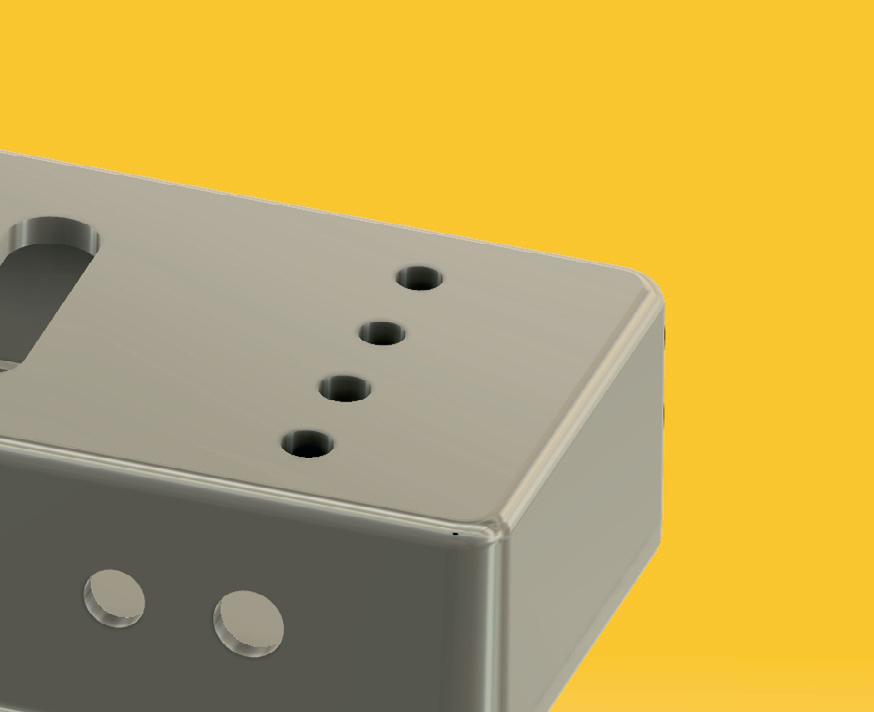
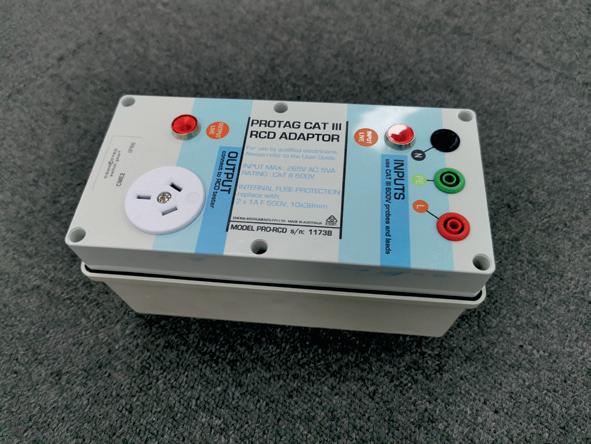
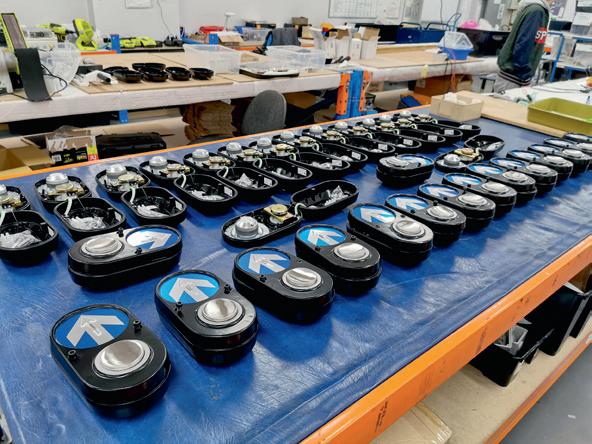
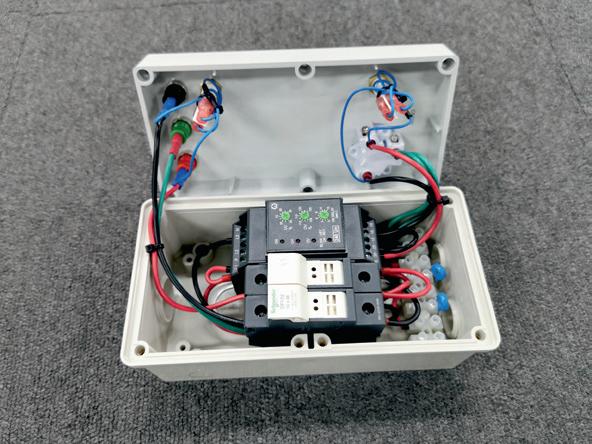
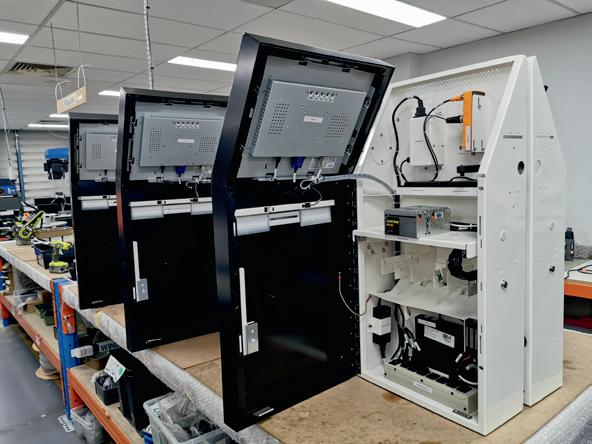
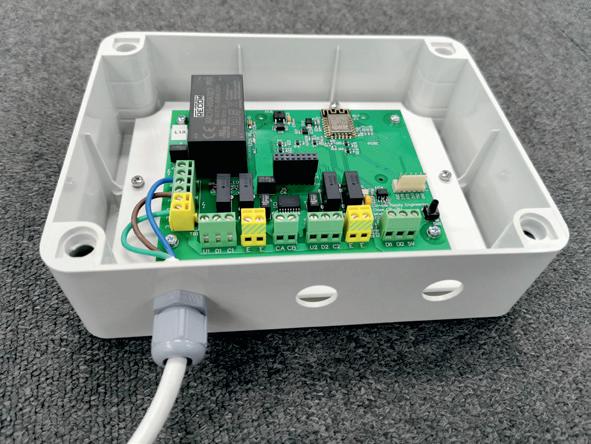


SHORTcircuits
SMALLER CHIPS ENABLE NEW RFID APPLICATIONS
Researchers at North Carolina State University (NC State) have made what is believed to be the smallest state-of-theart RFID chip, which should drive down the cost of RFID tags. In addition, the chip’s design makes it possible to embed RFID tags into high-value chips such as computer chips, boosting supply chain security for high-end technologies.
“As far as we can tell, it’s the world’s smallest Gen2compatible RFID chip,” said Professor Paul Franzon, corresponding author of a paper on the work. The paper was presented at the IEEE International Conference on RFID, held virtually from 27–29 April 2021.
Gen2 RFID chips are state of the art and are already in widespread use. One of the things that sets the new RFID chip apart is its size: it measures just 125 x 245 µm. Manufacturers have been able to make smaller RFID chips using earlier technologies, but Prof Franzon and his collaborators have not been able to identify smaller RFID chips that are compatible with the current Gen2 technology.
The smaller the chip, the more chips you can get from a single silicon wafer. The more chips you can get from the silicon wafer, the less expensive they are. “In practical terms,” said Prof Franzon, “this means that we can manufacture RFID tags for less than one cent each if we’re manufacturing them in volume.”
That makes it more feasible for manufacturers, distributors or retailers to use RFID tags to track lower-cost items. For example, the tags could be used to track all of the products in a grocery store without requiring employees to scan items individually.
“Another advantage is that the design of the circuits we used here is compatible with a wide range of semiconductor technologies, such as those used in conventional computer chips,” said Kirti Bhanushali, who worked on the project as a PhD student at NC State and is first author of the paper. “This makes it possible to incorporate RFID tags into computer chips, allowing users to track individual chips throughout their life cycle. This could help to reduce counterfeiting, and allow you to verify that a component is what it says it is.”
“We’ve demonstrated what is possible, and we know that these chips can be made using existing manufacturing technologies,” Prof Franzon concluded. “We’re now interested in working with industry partners to explore commercialising the chip in two ways: creating low-cost RFID at scale for use in sectors such as grocery stores, and embedding RFID tags into computer chips in order to secure high-value supply chains.”
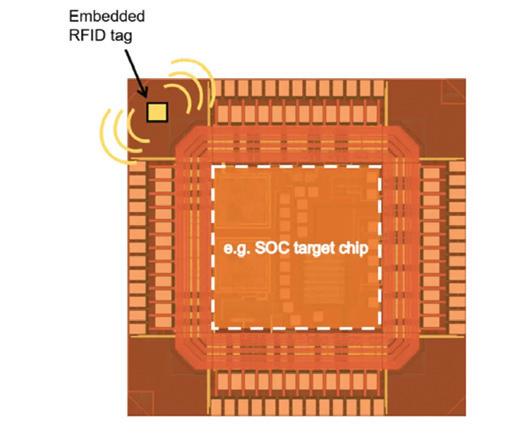
Researchers at Deakin University, in partnership with Australian start-up Li-S Energy, have developed an innovative lithium–sulfur (Li–S) battery that represents a step change in the global battery industry.
Li–S batteries have a significantly higher energy capacity than existing lithium-ion batteries. However, to date, they have a severe limitation with lifetime performance, typically degrading to the point of failure over very few charge and discharge cycles.
Deakin’s nanotechnology research team has developed an innovative use of the nanomaterial boron nitride nanotubes (BNNT) to improve the performance of Li–S batteries — retaining the high energy capacity and avoiding significant degradation over more than 450 charge and discharge cycles.
The team had to overcome three key challenges to creating a highperformance Li–S battery: 1. Engineer a conductive interface within the sulfur cathode. 2. Control the structural integrity of the cathode over extended cycling. 3. Prevent dendrite growth from the lithium-metal anode.
Each challenge involved significant aspects of innovation using BNNT and other integrated materials, which together facilitated the optimum functional relationship between lithium and sulfur in an energy storage device.
Li-S Energy has now lodged two key provisional patents covering the function of BNNT within the lithium–sulfur battery chemistry. The new technology covered by these patents has the potential to make large-scale manufacturing of Li–S batteries commercially viable for the first time.
Li-S Energy intends to optimise the design then scale up the production of the new batteries over the coming years, with almost unlimited potential uses — including the possibility of an electric car that only needs charging every 1000 km, a phone with a one-week battery life, off-grid solar/battery street lighting and drones with several hours of flight time.
“We have achieved a significant innovation breakthrough with our Li–S battery technology at a time when the world is demanding better batteries and more efficient energy storage devices,” said Li-S Energy CEO Dr Lee Finniear. “The commercialisation journey for Li-S Energy Limited has begun and is on track to showcase this Australian company as a recognised leader in this exciting industry.” The lead Deakin researchers, Alfred Deakin Professor Ying (Ian) Chen and Dr Baozhi Yu, added, “These results are the culmination of 10 years of research into the development of lithium–sulfur batteries and how that is influenced Li–S battery test results after 450 con- by advanced nanomaterials. The tinuous cycles. Specific capacity has been belief and investment in the research maintained at greater than 550 mAh/g, which is in the region of three times program from Li-S Energy have now the specific capacity of current lithium- enabled us to bring our research ion batteries. toward a commercial reality.”
Image credit: Deakin University. A sample of BNNT.











